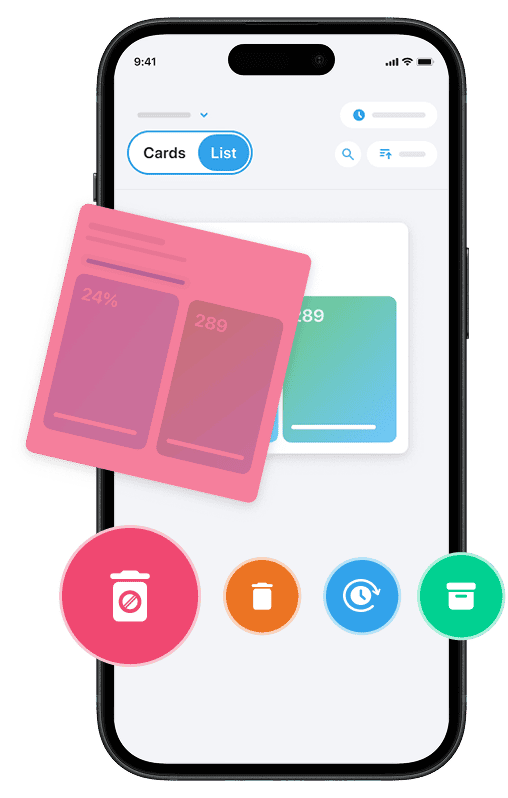In today’s hyperconnected world, cell phone addiction has quietly emerged as a significant global health concern, affecting billions of individuals. Smartphones, initially praised for their convenience and productivity, now often demand our constant attention, leading to problematic usage that disrupts daily life, mental health, and social interactions.
Research indicates that nearly half of the world’s population may be addicted to their mobile phones, checking devices hundreds of times daily. This behavior is frequently driven by fear of missing out (FOMO) or social media addiction, which are increasingly recognized as public mental health issues. These dependencies can lead to anxiety, diminished self-esteem, and disrupted routines.
If you find it hard to disconnect from your phone or feel uneasy without it, you’re not alone. By understanding this addiction and implementing practical strategies, you can regain control of your phone usage and enhance your overall wellbeing. To go deeper into mindful tech habits, explore what digital mindfulness really means and how it can help reshape your daily routines.
One of the simplest ways to start is by reducing digital noise — and that includes your inbox. Tools like Cleanfox help you unsubscribe from unwanted emails, block spam, and reclaim control over your digital space in just a few clicks.
1. Analyze Your Current Usage
Before you can effectively tackle your mobile phone addiction, it’s important to understand how and when you use your device. Start by tracking your phone usage patterns to get a clear picture of the time you spend on your smartphone, which apps you open most frequently, and the moments when you feel compelled to check your phone. Various apps designed for monitoring phone usage can help you visualize these patterns, offering insights into your screen time and social media habits.
This self-awareness is key because many people underestimate the extent of their problematic smartphone usage or its impact on their mental health and daily life. Analyzing your usage also helps identify triggers such as boredom, anxiety, or FOMO (fear of missing out), which often drive compulsive checking behaviors.

2. Set Specific Goals
Once you have a grasp of your current habits, the next step involves setting concrete and realistic goals to reduce your phone dependency. These goals might include limiting daily phone usage to a certain number of hours, restricting your use of social media apps, or designating phone-free times during the day. Setting specific targets makes it easier to measure progress and stay motivated.
Some people find it helpful to use tools like the smartphone addiction scale or apps that remind them to take breaks. Having clear goals aligns with strategies derived from cognitive behavioral therapy (CBT), which is often recommended in addiction treatment for managing phone addiction and internet addiction.
Remember, the aim is not necessarily total disconnection but rather regaining balance and control over your relationship with your mobile phone.

3. Implementing Changes in Daily Routines
One of the easiest ways to build better digital habits is by automating some of your email cleanup routines. Instead of manually deleting newsletters and spam every day, tools like Cleanfox can help you take back control of your inbox in just a few taps.
By organizing your emails, blocking unwanted senders, and deleting old messages you don’t read, Cleanfox makes it simple to reduce clutter and maintain a healthier digital routine — saving you time and mental energy every single day.
Say goodbye to spam, clutter, and chaos.
Our smart email cleaner filters out junk, organizes your inbox, and helps you focus on what really matters.
✅ Block spam automatically
✅ Organize emails by priority
✅ Keep your inbox clean
✅ Clean old emails you don’t read
📱 Available on the App Store and Google Play.
4. Create No-Phone Zones
Designating phone-free zones is a powerful strategy to reduce cell phone addiction. Establish areas in your home or workplace where using a phone is strictly prohibited.
For instance, making the dining table or bedroom a phone-free zone can enhance the quality of your interactions with family and improve your sleep. You can also expand these zones to include other areas like the living room or bathroom, gradually adapting to a more present lifestyle. This physical separation from your device encourages mindfulness and helps you evaluate when and why you use your phone, promoting healthier mobile phone usage habits.

5. Change Notification Settings
Adjusting your notification settings can significantly impact your phone usage. Consider turning off notifications for non-essential apps or setting specific times when notifications are silenced using the Do Not Disturb feature.
This approach helps reduce the constant urge to check your phone due to fear of missing out (FOMO) or anxiety caused by missed notifications. By minimizing distractions, you can focus better on your daily tasks and maintain a healthier balance between your digital and real-world interactions.

6. Replace Phone Time
One effective way to combat smartphone addiction is to replace phone time with other activities. This could involve engaging in hobbies, reading, or spending time outdoors. By substituting screen time with more fulfilling activities, you can manage problematic mobile phone use and improve your overall mental health.
For instance, if you typically reach for your phone during breaks, try using that time to practice mindfulness, journal, or engage in a physical activity. This shift in lifestyle can help you develop healthier habits and reduce your reliance on your phone.

7. Building New Habits
Overcoming cell phone addiction requires more than just limiting screen time — it’s about building sustainable habits that support a healthier relationship with your device. Many people benefit from replacing unhelpful smartphone behaviors with mindful routines, such as setting phone-free zones or scheduling regular breaks. These small changes help retrain your brain and reduce the urge to check your phone constantly.
Experts often recommend cognitive behavioral therapy (CBT) as an effective treatment for smartphone addiction. By identifying triggers and developing positive coping strategies, people can gradually shift away from compulsive device use and build habits that align with their goals and values. Whether you’re glued to your cell for work or social media, forming new routines is essential for long-term digital wellbeing.

8. Utilize Technology to Your Advantage
While technology can contribute to smartphone addiction, it can also be part of the solution. There are numerous apps designed to help monitor and limit your mobile phone usage, such as digital wellbeing tools and usage trackers that provide real-time feedback on your screen time. Some apps even encourage productive breaks or use principles from cognitive behavioral therapy (CBT) to promote healthier habits.
Leveraging these tools allows you to set boundaries and stay accountable as you work toward reducing your dependence on your phone, making technology work in your favor rather than against you.

9. Engage in Mindfulness Exercises
Practicing mindfulness is a proven method to combat problematic smartphone use and reduce anxiety linked with constant connectivity. Mindfulness exercises, such as short mindful breathing breaks or meditation, help increase your awareness of urges to check your phone and cultivate self-control. Research indicates that mindfulness can reduce compulsive behaviors associated with phone addiction, improve mental health, and even help with better sleep by lowering rumination before bedtime.
Try incorporating brief mindful moments into your day, especially when you feel the craving to scroll through social media or check notifications.

10. Seek Social Support
Breaking free from cell phone addiction doesn’t have to be a solo journey. Sharing your goals with friends or family can provide encouragement, accountability, and motivation to stick to healthier habits.
You might also consider joining support groups or leveraging peer networks, especially if your phone and social media use are tied to social anxiety or low self-esteem. Professional help, including addiction treatment programs that use behavioral therapies, can be effective in addressing severe cases of smartphone addiction and related mental health challenges. Surrounding yourself with a supportive community can make all the difference in sustaining positive change.

Conclusion 💡
Breaking free from cell phone addiction starts with awareness and intentional change. Remember to analyze your current phone usage, set clear goals, and create phone-free zones in your daily routine.
Adjusting notifications and replacing screen time with fulfilling activities can drastically reduce your dependence. Building new habits with the help of technology, mindfulness, and social support reinforces your progress.
Taking these steps not only improves your mental health and reduces anxiety but also restores balance to your daily life. Now is the time to take control and embrace a healthier relationship with your smartphone.
FAQ🔍
How can I tell if my cell phone use has become an addiction?
You may have a cell phone addiction if you feel anxious or irritable without your phone, prioritize phone use over other activities, experience sleep or relationship problems, struggle to control your phone use, or continue using your phone despite negative consequences in daily life.
What are some practical daily habits to reduce my phone dependency effectively?
To reduce phone dependency, set specific phone-free times daily, use apps to limit screen time, enable “Do Not Disturb” mode, replace scrolling with reading, charge your phone in another room overnight, and try occasional digital detox days. Establish consistent habits and distractions to break mindless usage.
Are there any apps or tools that can help me control and monitor my cell phone usage?
There are several apps and tools available to help control and monitor cell phone usage:
- Cleanfox: Even though this app doesn’t track your screen time or anything related to your phone usage, Cleanfox helps you keep your inbox completely free of spam — and the best part is, it’s 100% free.
- StayFree: Tracks screen time, blocks apps, and sets usage limits to reduce addiction and improve focus.
- AppBlock: Customizes app blocking schedules to prevent distractions.
- Engross: Boosts productivity with timers and goals.
- Family tracking apps: Tools like Msafely and OneLocator offer location tracking and monitoring features, including app and call monitoring.
- Life360: Adds safety alerts and crash detection, enhancing overall phone usage control and monitoring.
How can setting phone-free periods during the day help break phone addiction?
Setting phone-free periods helps break phone addiction by reducing constant exposure to stimuli that trigger dopamine release, thereby weakening habitual checking. It encourages mindfulness, promotes real-world social interactions, reduces anxiety from notifications, and helps establish healthier boundaries and control over device usage. This fosters emotional resilience and a balanced relationship with technology.
Liked this article? Dive deeper into healthy digital habits with our post How to Stop Checking Email All the Time, and don’t forget to explore the blog for more productivity tips.



